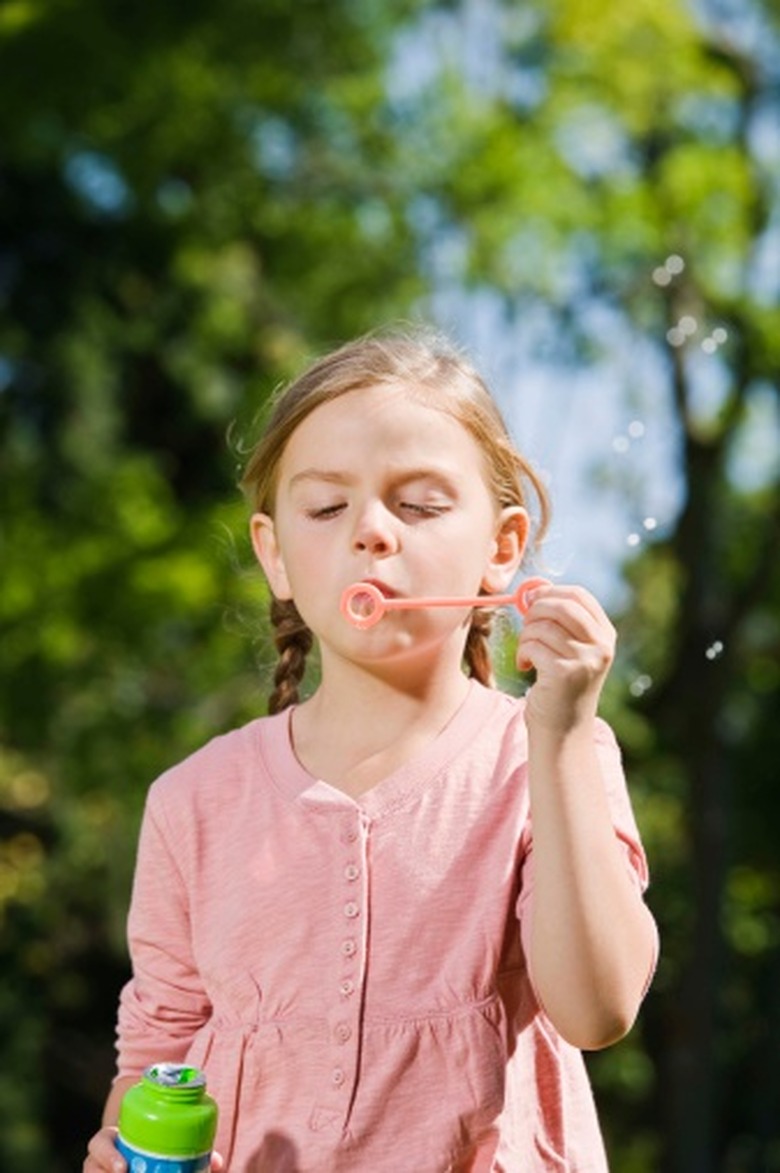What Is In Corn Syrup That Makes A Bubble?
The ingredients of corn syrup are not what make it an ideal addition to bubble solution. What helps corn syrup make great bubbles are its physical properties, and the way they interact with water and liquid soap.
Polarity of Water Molecules
Polarity of Water Molecules
The most prominent ingredient in bubble solution is water. An interesting fact about water molecules is that they are polar. This means that water molecules have both a positive and a negative end, much like a magnet. And like a magnet, the negative end of one water molecule sticks to the positive end of another water molecule. In essence, water sticks to itself.
Surface Tension
Surface Tension
If water sticks to itself, why can't you just blow into it and get bubbles? Because of surface tension; the top of a water surface has plenty of it. Have you ever seen a bug walk across the top of water? That's because the surface tension of the water is stronger than the weight of the bug. It's this same strength that prevents water alone from being a good bubble solution.
Soap and Corn Syrup
Soap and Corn Syrup
When you mix soap into water, the soap relaxes the bond between water molecules and weakens the surface tension, allowing for it to stretch and envelope air to form bubbles. What is happening is that a thin layer of water is actually being trapped between two layers of soap. When you add corn syrup to the mix, its physical properties of being a thick, starchy liquid further strengthen the soap, allowing for larger bubbles that last longer.
Evaporation
Evaporation
Water, by its very nature, evaporates. When the water that is trapped between the soap/corn syrup layers evaporates, the bubble pops.
Cite This Article
MLA
Hineman, Geoff. "What Is In Corn Syrup That Makes A Bubble?" sciencing.com, https://www.sciencing.com/corn-syrup-bubble-7957913/. 24 April 2017.
APA
Hineman, Geoff. (2017, April 24). What Is In Corn Syrup That Makes A Bubble?. sciencing.com. Retrieved from https://www.sciencing.com/corn-syrup-bubble-7957913/
Chicago
Hineman, Geoff. What Is In Corn Syrup That Makes A Bubble? last modified March 24, 2022. https://www.sciencing.com/corn-syrup-bubble-7957913/
